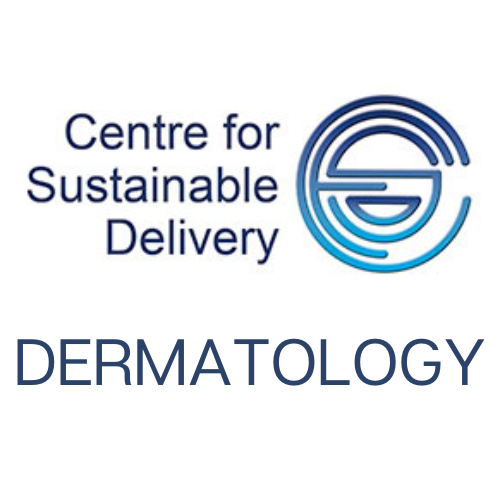Low risk BCCs management: Patient (>24 years) has a BCC less than or equal to 1cm below the clavicle, and is of the superficial or nodulocystic histology, and is not overlying important anatomical structures (e.g. major vessels), and the patient is not immunosuppressed, and does not have Gorlin’s syndrome.
Lesions should be biopsied if there is uncertainty regarding the diagnosis, if not, they must be closely followed-up and referred if not improved by treatment.
For superficial BCCs (sBCC)
Prescribe:
- Topical fluorouracil 5% cream (Efudix)
1 cm margin around the lesion twice daily, for 4 weeks.
Alternatively;
Prescribe:
- Imiquimod (Aldara 5% cream) once daily, 5 times a week, for 6 weeks.
Consider surgery for sBCC and some nodular BCCs at low risk sites
Low/ intermediate risk BCCs management: Patient (>24 years) has a BCC less than 1 cm above the clavicle and is of the Superficial or nodulocystic histology; Patient has a BCC greater than or equal to 2cm below the clavicle and is of the Superficial or nodulocystic histology; Patient is not immunosuppressed, does not have Gorlin’s syndrome.
Nodulocystic BCCs of greater than 1cm above the clavicle and greater than 2cm below it should be treated with a complete excision by an accredited skin surgeon, with 4mm surgical margins.
Nodulocystic BCCs ≤1 cm at low-risk sites can be treated with curettage and cautery (with sufficient passes). If the histopathology shows any high-risk features, then a formal excision by an accredited skin surgeon in an approved site is advised.
High risk BCCs management: Patient (>24 years) has a BCC greater than or equal to 1cm on their facial areas (nose, lips, periorbital) and is of a high-risk (Infiltrative, micronodular, basosquamous) Histological type; Patient is immunocompromised or has a genetic predisposition e.g. Gorlin’s syndrome.
High risk BCCs as mentioned above regardless of size should be referred as an urgent referral
Note that infiltrative BCCs can be difficult to diagnose. To aid diagnosis, stretching out the lesion or using an alcohol wipe may reveal the typical pearly features.
Dermoscopy can show the sharply focused telangiectasia. Consider a shave biopsy to confirm.
